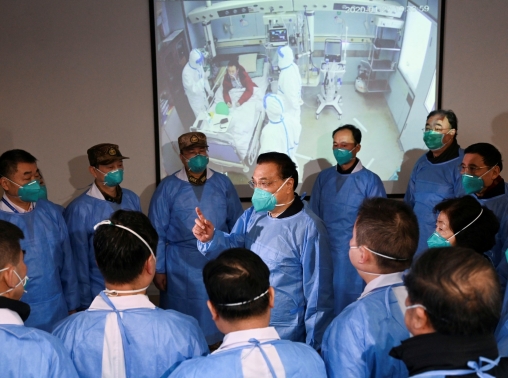|
|
RAND research and commentary on the issues that matter most
|
Feb 6, 2020
|
|
|
|
|
Photo by SDI Productions/Getty Images
|
|
|
|
Civic engagement activities—such as voting or volunteering—are essential for the health of democracy. But could they improve your health, too? Evidence from a recent RAND study shows that increased civic engagement is linked to better physical and mental health for people and whole communities. This extends to a range of areas, including lower rates of cancer, heart disease, and depression.
Notably, it's not clear whether better health causes more civic engagement or vice versa. But as U.S. primary elections begin this month, it's nice to know that taking a turn at the ballot box might boost your well-being. Read more »
|

|
|
U.S. President Donald Trump before delivering his third State of the Union address in Washington, D.C., February 4, 2020. Photo by Doug Mills/Pool via Reuters
|
|
President Trump gave the final State of the Union address of his four-year term on Tuesday night. While many may view his remarks through the lens of the unprecedented circumstances surrounding the evening, it's important to note that the speech touched on a range of policy challenges, including the opioid crisis, health care reform, and infrastructure. If policymakers are to develop effective solutions, they'll need to draw on objective and nonpartisan resources. That's why we've rounded up insights from RAND's research, analysis, and expertise.
Read more »
|
|

|
|
Chinese Premier Li Keqiang speaks to medical workers at the Jinyintan hospital during the coronavirus outbreak, Wuhan, China, January 27, 2020. Photo by cnsphoto via Reuters
|
|
More than 560 people have died from the new coronavirus in China, and the number of infections continues to soar. There are also confirmed cases of this novel respiratory virus in more than two dozen other countries. In congressional testimony this week, RAND's Jennifer Bouey explained how China and the United States have collaborated to fight past outbreaks, including SARS. It's important for Beijing and Washington to continue long-term cooperation on this front, she says. But U.S. health professionals could also help in the near term, by reaching out with humanitarian and technical aid.
Read more »
|
|

|
|
Russian President Vladimir Putin during a news conference in Moscow, December 19, 2019. Photo by Evgenia Novozhenina/Reuters
|
|
The goal of deterrence is to prevent aggression. But if deterrence is too heavy-handed, then it might prompt the aggression it seeks to avoid. A new RAND paper examines how NATO can prevent this from happening when deterring Russia. The authors identify “redlines” that the alliance likely cannot cross without eliciting a major or hostile response from Moscow. They also highlight one tactic that seems to hold the most potential for effective deterrence: carefully calibrated changes in force posture.
Read more »
|
|

|
|
Photo by tommaso79/Getty Images
|
|
“Is it bad if my partner and I sleep apart?” This is the question RAND's Wendy Troxel, a sleep scientist and clinician, hears most often. In a recent TEDx talk, she explains that there is no one-size-fits-all sleeping strategy for couples. But everyone should make sleep a priority. And if you and your partner do sleep separately, don't think of this as filing for a “sleep divorce,” says Troxel. Think of it as forging a “sleep alliance.”
Watch the video »
|
|

|
|
An M1075 palletized load system truck and an M915 line-haul tractor are equipped with add-on kits that make the vehicles fully autonomous. Photo by Bruce Huffman/U.S. Army
|
|
Using robotic ground vehicles in U.S. Army convoys could help increase efficiency and save soldiers' lives. But it would also bring new risks. A new RAND report explores different options for deploying this technology. The authors find that a mix of both manned and unmanned vehicles—a convoy in which automated trucks, each with a single soldier, follow a fully manned truck—may be the best option. This could help address some of the technical and tactical risks posed by using automated vehicles.
Read more »
|
|
|
You already get the latest insights from RAND in your inbox. Why not your earbuds?
Policy Currents is available as a weekly podcast. Five minutes, every Friday.
Subscribe now »
|
|
|
|
|